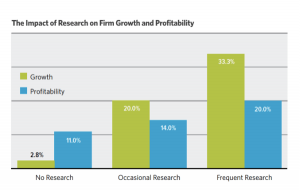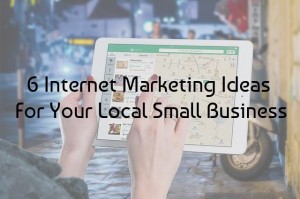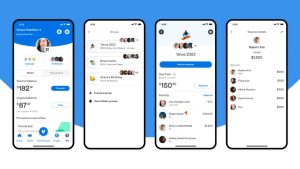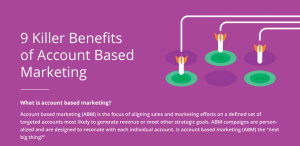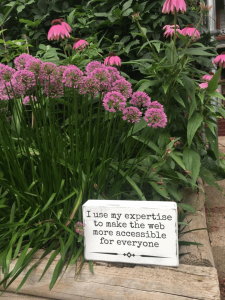Columnist Peter Minnium of the Interactive Advertising Bureau (IAB) says online ads are getting more creative, and more tailored to their objectives.

Digital advertising creativity is flourishing, having undergone a dramatic transformation over the past several years.
Gone are the days of using digital ads almost exclusively for direct marketing purposes. Today, marketers are successfully employing digital advertising to achieve strategic objectives all along the purchase funnel.
The digital advertising market is trifurcating into three types of advertising to fuel this: concept ads to drive awareness and interest, content ads to turn interest to desire, and commerce ads to fulfill this desire with tangible actions.

Smart marketers, agencies, and publishers are mastering this three-part typology, as it helps simplify advertising and marketing planning and the ways in which strategy, media, and creative execution come together in pursuit of marketers’ goals.
Concept Ads
Concept ads sit at the top of the funnel. They are fully produced, carefully crafted and finished products that aspire to match the memorability and impact of the very best advertising and have upper-funnel goals like generating brand awareness and intent to purchase.
The use of these ads continues to grow, driven by marketers’ needs to create new desire and demand. Digital video ads and IAB Rising Stars such as the Full-Page Flex and Billboard are often used for concepts ads. So, too, are television commercials and full-page magazine spreads.

Given their upper-funnel goals, the most common method of evaluating success for concept ads is with online brand impact ad effectiveness studies. These typically measure things like awareness, brand affinity, and purchase intent, as well as change in attitudes toward and understanding of brands.
While not as widespread, there is a growing body of evidence that suggests that in-view time is a strong correlate with brand effectiveness. In other words, the longer an ad is in the viewport of the target audience, the stronger the brand lift will be.
Goldstein, McAfee, and Suri make a compelling case for this in their research, concluding that “…for exposure times of up to one minute, there is a strong, causal influence of exposure time on ad recognition and recall, with the marginal effects diminishing at durations beyond this level.”
Chartbeat, the digital attention analytics company, has observed similar results, finding that when visitors “read more…they’re more apt to recall the brand that advertises next to that content they just consumed.”
Regardless of how success is measured on a campaign basis, there is widespread understanding that digital concept ads work to drive brand value. As such, they will continue to be in demand.
However, we now live in a world where content is fluid across screens, and so too must be digital concept advertising. For this reason, in 2015 the IAB (my employer) is creating Flex Ad Standards, to enable creators to deliver responsive brand concept ads and buyers and sellers to transact on a single cross-screen ad equivalent. The IAB Full-Page Flex Rising Stars is one early example of a Flex standard.
Content Ads
Content ads typically have the mid-funnel goal of enhancing consumer understanding of a brand or product. They accomplish this by providing high-quality content with which the viewer can engage – for example, by reading or viewing, sharing, or commenting.
Content ads are collections of brand assets that often have no fixed rules about compilation and rendering.

Content ads frequently are delivered as a stream of assets in a vertical ad format (e.g., IAB Filmstrip, Portrait, or Half Page) or in a stream of content (e.g., Facebook or Twitter in-feed ads). What is currently being called native advertising is the dominant form of content advertising.
While there is currently no standard way of measuring content ad effectiveness, given their mid-funnel goals of creating interest in and enhancing understanding of brands, there is a growing consensus around a few key metrics. Samantha Skey, Chief Revenue Officer, SheKnows, puts it eloquently:
“We measure the efficacy of native ads approximately the same way we measure the efficacy of content. So essentially, volume of interest, depth of interest, time spent engaged interacting with it, and then the desire to share.”
In less elegant, more practical terms, this may include pageviews, time spent, and social actions (e.g., comment, share, like).
Regardless of how one specifically tracks success with content advertising, it is clear that it is driving results for brands.
IAB has been aggressive in providing guidance for the growth of content advertising, starting with the Native Advertising Playbook, continuing with seminal research with Edelman/Berland to understand how consumers perceive and feel about in-feed sponsored content. Most recently, a Native Advertising Disclosure Workshop, in which the FTC participated, significantly advanced that critical conversation and IAB leadership.
In 2015, IAB will bring creative guidance to the market, with Dynamic Content Ad Standards, its first not defined by pixel height and width, to power scale efficiency.
While native content advertising is a significant new form, it is important to remember that it is an addition to and not a replacement for other types of digital advertising, such as concept and commerce ads.
Commerce Ads
Commerce ads dominate display today, especially the ubiquitous retargeting types that persistently follow consumers across the web. Typically rendered in a previous-generation ad standard, these ads tend to have a single, bottom-funnel goal, and their design reflects this focus.
While they are not typically visually or experientially rich, the rendering and serving logic can be sophisticated to ensure that the right offer is served to each viewer.

While there continues to be a gray area with regard to measuring the success of concept and content ads, doing so with commerce ads is quite black and white, with clicks and conversions commonly used for this purpose.
There is, however, a healthy debate ongoing in the industry over attribution, with many saying that an over-reliance on last-click attribution still persists and overstates the impact of commerce ads while significantly undervaluing the concept and content ads that move prospects down the funnel.
Four years ago, when I started steering ad products and standards at the IAB and established the first Rising Stars (concept ad formats), I was hell-bent against the commerce ads that dominated the web, mistakenly blaming them for the under-representation of creative brand advertising online. At the time, I dreamed of banner-icide; yes, killing them off.
Digital Ads Span The Purchase Funnel
Needless to say, I have matured and now see commerce ads continuing to play an important role in the digital advertising ecosystem. Thankfully, they no longer monopolize the space, having been joined by a healthy and growing phalanx of concept and content ads. Today, smart marketers, agencies, and publishers strategically employ all three types of digital advertising to achieve objectives across the purchase funnel.
Marketing Land – Internet Marketing News, Strategies & Tips
(276)




